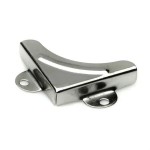Screen Mirror Asus Laptop To Samsung TV
Mirroring an Asus laptop screen to a Samsung TV allows users to enjoy a larger display for various activities, from presentations and entertainment to gaming and browsing. Several methods facilitate this connection, each with its own set of advantages and requirements.
Wireless Methods
Wireless mirroring offers a cable-free and convenient setup. Key considerations include network compatibility and potential latency issues, particularly impacting activities like gaming. Here are some popular wireless mirroring options:
Miracast: This standard allows direct wireless connection between devices. Ensure both the Asus laptop and Samsung TV support Miracast. If the TV doesn't natively support Miracast, a compatible adapter can be used. Windows 10 and 11 offer built-in Miracast support accessible through the "Connect" feature (Windows Key + K). This method provides decent performance for general use but may experience occasional lag.
Wi-Fi Direct: Similar to Miracast, Wi-Fi Direct creates a direct peer-to-peer connection between the laptop and the TV. This method usually requires enabling Wi-Fi Direct on both devices and then selecting the TV from the available devices list on the laptop. Performance is comparable to Miracast.
DLNA: DLNA (Digital Living Network Alliance) allows media streaming from the laptop to the TV over the home network. Unlike true mirroring, DLNA streams specific media files rather than duplicating the entire screen. This is ideal for sharing photos, videos, and music, but not suitable for activities requiring screen mirroring like gaming or presentations.
Third-party Apps: Several applications, such as AirServer and Plex, facilitate screen mirroring and media streaming functionality. These apps often require installation on both the laptop and the TV (if it supports app installation), or the use of a streaming device like a Roku or Chromecast connected to the TV. Performance and features vary between apps, so research is recommended.
Wired Methods
Wired connections provide a more stable and lag-free experience, particularly beneficial for gaming and activities requiring precise timing. However, they require a physical cable connection between the devices, limiting mobility.
HDMI: The most common wired method, HDMI offers high-quality video and audio transmission. Connect an HDMI cable from the HDMI port on the Asus laptop to the HDMI port on the Samsung TV. Select the appropriate HDMI input source on the TV using the remote. Ensure the laptop's display settings are configured to extend or duplicate the display to the connected TV.
USB-C to HDMI Adapter: If the Asus laptop features a USB-C port with DisplayPort Alternate Mode (DP Alt Mode) support, a USB-C to HDMI adapter can be used. This adapter converts the USB-C output to an HDMI signal, allowing connection to the TV. This is a convenient option for laptops with limited ports.
Troubleshooting Common Issues
Screen mirroring issues can arise due to various factors. Here are some common problems and troubleshooting steps:
No Connection: Verify both devices are on the same network (for wireless methods), and check for any physical cable connection issues (for wired methods). Restart both devices to resolve temporary glitches.
Lag or Stuttering: Reduce the distance between the devices for wireless connections. Close unnecessary applications on the laptop to free up system resources. Consider a wired connection for smoother performance.
Audio Issues: Ensure the audio output device is correctly selected on the laptop. The default audio output might need to be changed to the TV after connecting. Check the TV's volume settings as well.
Black Screen: Check the input source selected on the TV. Try a different HDMI cable or port. Update the graphics drivers on the laptop.
Optimizing Screen Mirroring Performance
Achieving optimal performance during screen mirroring requires attention to certain factors.
Network Connection (Wireless): A strong and stable Wi-Fi network is essential for smooth wireless mirroring. Interference from other devices can impact performance. Consider using a 5GHz Wi-Fi band if available.
Laptop Performance: Close unnecessary applications running on the laptop to free up resources and improve mirroring performance. Ensure the laptop's graphics drivers are up-to-date.
TV Settings: Check the TV's picture settings for options like "Game Mode" which may optimize latency for gaming and other interactive activities.
Choosing the Right Method
The best method for screen mirroring depends on individual needs and preferences. Wired connections offer superior stability and performance for demanding tasks like gaming. Wireless methods provide greater convenience and flexibility for casual viewing and presentations.
Consider the specific requirements of the activity, the available ports on the laptop and TV, and the desired level of performance when choosing a mirroring method.

Connecting Laptop To The Tv With Just A Few Simple Steps Resource Centre By Reliance Digital

How To Screen Mirror Stream Laptop Pc Tv Wireless No Adapters

How To Connect Mirror Laptop Screen On Any Smart Tv Wirelessly No App

Access Your Pc Remotely On Samsung Qled Tv Or Smart Monitor

How To Easily Connect Your Laptop Tv Asurion

How To Connect Laptop Samsung Tv Screen Mirror Pc Without Hdmi

How To Screen Mirror Windows 11 A Samsung Smart Tv

How To Connect Windows 10 Laptop Samsung Smart Tv With Wi Fi Connection

How To Screen Mirror Laptop Tv Samsung

Screen Mirroring To Your Samsung Tv








